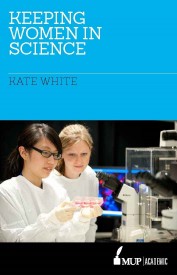
Interview conducted by Nikola Bowden and Maggie Hardy (EMCR Forum Executive).
For over 20 years my research has focused on gender and higher education (HE), especially on increasing the representation of women in HE management, and on women’s academic careers. With Professor Barbara Bagilhole, Loughborough University, I established the Women in Higher Education Management Network. When the Equality in Science Committee at the Florey Institute of Neuroscience and Mental Health approached me to discuss career progression for women research scientists this provided the opportunity to examine gender and science careers. Gender equity is important because it provides greater diversity in research teams and ultimately leads to better outcomes for science research.
Early- and mid-career researchers need to understand that networks, mobility and mentoring are critical to building their careers. And all three are linked. Building research networks nationally, but more importantly internationally, are essential to becoming an independent researcher. There is evidence in my book Keeping Women in Science that some women have more difficulty accessing international networks because of male dominance of particular fields and male patterns of social behaviour that can exclude women.
To build international networks, early career science researchers need to be mobile. Australia’s geographic isolation becomes a challenge. It was clear that these models of mobility are highly gendered because they presuppose that the early career researcher is not in a relationship, does not have a partner who also has a career, and has no children. More flexible models of mobility included short assignments—three to six months—in labs overseas developing collaborations or learning new techniques; or attaching a visit to a lab to presenting at an overseas conference.
Early career researchers can benefit from frequent and structured mentoring about options for career paths. Formal career development sessions with supervisors as well as occasional career development seminars organised by their institute might be beneficial. But your supervisor or direct manager may not necessarily be your best mentor for career advice. While most PhD students and early career researchers in my study believed that they were provided with good mentoring, some were confused about the difference between mentoring provided by their direct supervisors and mentoring provided by someone outside their direct work area. These separate, yet complementary, roles of the supervisor and mentor need to be emphasised, as confusion about these roles may mean that young researchers are missing out on important advice about career development.
In order to create a more equitable environment we need to analyse the challenges that women face in science research. Women are underrepresented in senior ranks in science organisations and discussion of this shifts the responsibility of the organisation to reflect on a culture that is not encouraging to some women, back to the individual. The view that women can choose to remain single, to remain childless, to have a partner and/or to have children and that these choices will impact on their career progression underlines the role of the organisational culture in perpetuating the focus on work-life balance as a personal rather than an institutional issue. The current funding model makes it difficult for women with family responsibilities to compete with men, and for supervisors to support women with career disruptions because they are working within a highly competitive funding system. Finally, women often exit science research because they are looking for financial stability and a more collaborative working environment.
To create a more equitable environment science research institutes need to recognise dual careers, support more flexible work options including part-time work, and provide better transitioning back-to-work packages for women on maternity leave. What needs to change is the funding model for Australian science research because the current model does not encourage flexible work options for research scientists at any level in science labs.
Be incredibly focused, and find good mentors and sponsors early on in your career. Sponsorship is a special kind of relationship and is more directed than mentoring. Sponsors are those people who will recommend younger colleagues, open doors for them (metaphorically), praise and encourage them, position them in terms of experiences and contacts, and help them know how to move to the next career step.
There is a huge generational change underway in science research that will lead to more diversity in science labs and better outcomes for scientists and for Australian science. This generational shift is between the male Baby Boomers who are currently in science research leadership and the younger male and female researchers—the Gen Xs and Gen Ys who favour work-life balance above being recognised as top scientists.
The book can be purchased online: Keeping Women in Science at Melbourne University Publishing
Twitter: @MUPublishing
Facebook: facebook.com/MUPublishing
Thanks for this opportunity to share the results of my research with early- and mid-career science researchers. These scientists are Australia’s future science leaders and they will change the model of science excellence in this country and also change outcomes for science.
© 2025 Australian Academy of Science